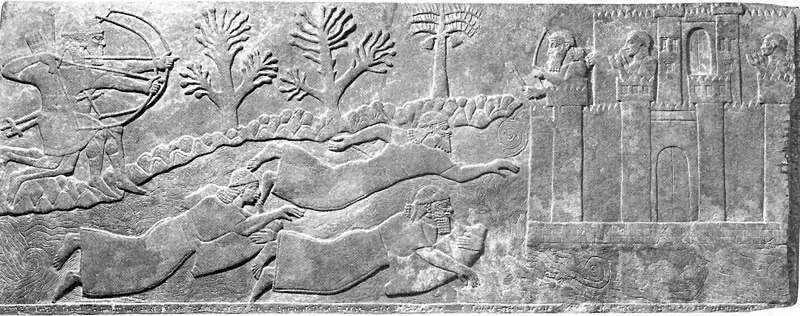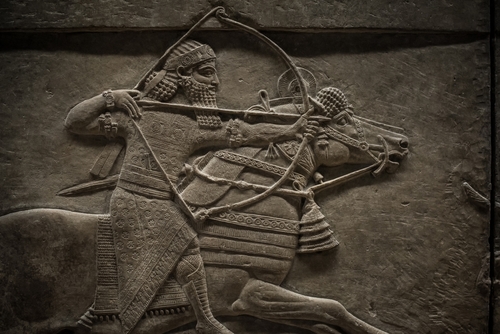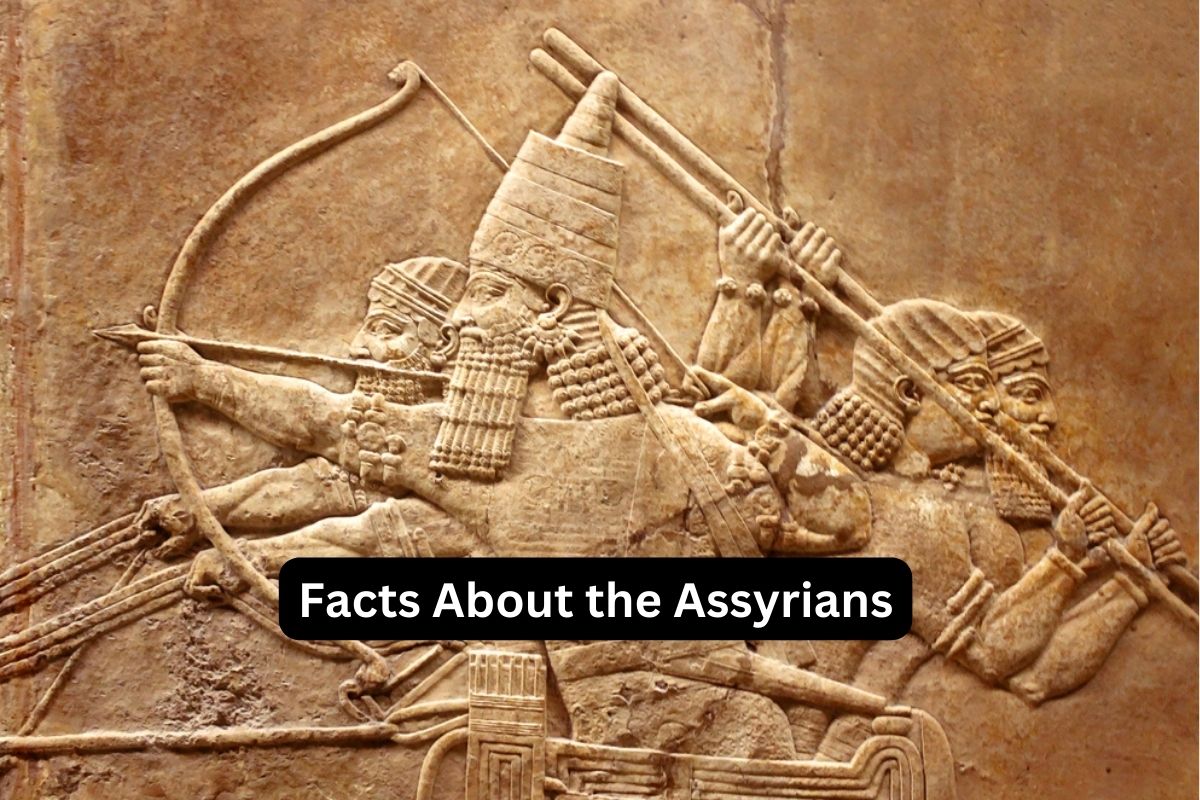The Assyrians were an ancient Semitic people who emerged in Mesopotamia, present-day Iraq, Syria, and Turkey. They established the powerful Neo-Assyrian Empire, known for its military prowess and territorial expansion.
Assyrian society was centralized under a strong monarchy, with the king holding absolute power. They were skilled builders and architects, leaving behind impressive palaces and temples adorned with intricate reliefs.
The Assyrians made significant contributions to art and culture, excelling in sculpture, metalwork, and ivory carving. They developed the cuneiform writing system and practiced a polytheistic religion.
Despite their achievements, the Neo-Assyrian Empire eventually fell to a coalition of Babylonians, Medes, and Scythians in 612 BCE, marking the end of their dominance in the region.
Assyrians Facts
1. Ancient Semitic people from Mesopotamia
The Assyrians were an ancient Semitic people who inhabited the region of Mesopotamia, which encompassed parts of present-day Iraq, Syria, and Turkey.
Also Read: Assyrian Empire Timeline
They emerged as a distinct cultural group around the 25th century BCE and played a significant role in shaping the history of the Near East.
2. Established the powerful Neo-Assyrian Empire
The Assyrians established the Neo-Assyrian Empire, which rose to prominence from the 10th century BCE to the 7th century BCE. This empire became one of the most formidable and influential powers of its time.
Also Read: Accomplishments of the Assyrian Empire
Under the leadership of kings like Ashurnasirpal II, Tiglath-Pileser III, and Sennacherib, the Assyrians expanded their territories through military campaigns, conquering various regions and establishing control over vast lands.

3. Known for their military prowess and brutal warfare tactics
The Assyrians were renowned for their military prowess and brutal warfare tactics. They developed advanced military strategies and technologies that allowed them to become a dominant force in the ancient world.
The Assyrian army was well-organized and equipped with skilled infantry, cavalry, and chariotry. They were highly effective in siege warfare, employing techniques such as battering rams, siege towers, and sapping to conquer fortified cities.
The Assyrians instilled fear in their enemies through ruthless tactics, such as mass deportations, forced resettlements, and public displays of violence.
These military successes were crucial to the Assyrians’ ability to expand their empire and maintain control over their vast territories. However, their aggressive conquests and harsh treatment of conquered peoples also earned them a fearsome reputation among their contemporaries.
4. Highly organized and centralized society under a monarchy
Assyrian society was characterized by a centralized and hierarchical structure. At the top of the social and political hierarchy was the king, who held absolute power and was considered the highest authority.
The king was believed to be the representative of the gods on Earth and played a pivotal role in religious ceremonies and rituals. Below the king were nobles, priests, and other high-ranking officials who served in various administrative and religious capacities.
5. Skilled builders and architects
The Assyrians were renowned for their architectural achievements. They constructed magnificent palaces and temples, which served as symbols of their power and grandeur.
These structures, such as the palace of King Sennacherib in Nineveh, were often adorned with intricately carved reliefs and sculptures depicting scenes from daily life, religious ceremonies, and military conquests. Assyrian architecture showcased their advanced engineering skills and artistic sensibilities.
6. Made significant contributions to art and culture
The Assyrians made significant contributions to art and culture. They excelled in various forms of artistic expression, including sculpture, metalwork, and ivory carving.
Assyrian sculptures were characterized by their naturalistic details, depicting both humans and animals with intricate craftsmanship. Ivory carvings, often used for furniture and decorative purposes, displayed scenes of royal hunts, religious motifs, and mythological narratives.
The Assyrians also developed advanced techniques in metalwork, producing intricate jewelry, weapons, and other ornamental objects.
Art and culture played an essential role in Assyrian society, serving as a means of expressing power, wealth, and religious devotion. Their artistic achievements continue to captivate and influence modern perceptions of the ancient world.

7. Developed the cuneiform writing system
The Assyrians developed a system of writing known as cuneiform. Cuneiform script was composed of wedge-shaped marks made on clay tablets using a reed stylus. It was one of the earliest known writing systems and was used for various purposes.
The Assyrians used cuneiform to record historical events, write down legal codes, document religious rituals, and keep administrative records. These clay tablets have provided valuable insights into Assyrian history, culture, and daily life.
8. Practiced a polytheistic religion
The Assyrians practiced a polytheistic religion. They worshiped a pantheon of gods and goddesses, with each deity having specific domains and responsibilities. Ashur was the chief god and the national deity of the Assyrians.
Other prominent deities included Ishtar, the goddess of love and war, and Shamash, the god of justice and the sun. The Assyrians believed in the close relationship between the divine and earthly realms, with the king serving as the intermediary between the gods and the people.
9. Conquered and assimilated neighboring regions and peoples
The Assyrians were known for their extensive conquests and territorial expansion. They built a vast empire that stretched from the Persian Gulf in the south to the Mediterranean Sea in the west.
Through military campaigns, the Assyrians conquered and assimilated various neighboring regions and peoples. Their empire encompassed territories such as Babylonia, Elam, Phoenicia, and parts of Egypt.
The Assyrians established an efficient system of provincial administration to govern their vast empire, allowing for centralized control and extraction of resources.
10. The Neo-Assyrian Empire fell in 612 BCE
The Neo-Assyrian Empire eventually declined and fell in 612 BCE. The empire faced numerous challenges, including internal instability, economic pressures, and external invasions. A coalition of Babylonians, Medes, and Scythians sacked the Assyrian capital city of Nineveh, marking the end of the empire.
After the fall of the Neo-Assyrian Empire, the Assyrians ceased to have a centralized political presence in the region. However, their cultural and historical legacy continued to influence subsequent civilizations, and their achievements left a lasting impact on the development of the ancient Near East.
